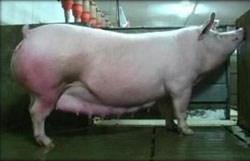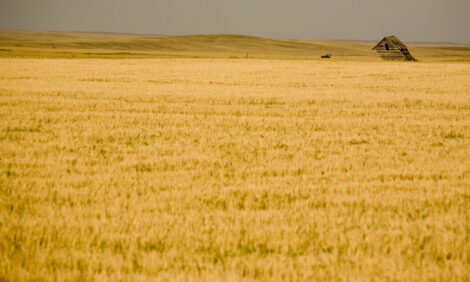



Sow Longevity in the Swine Industry
CANADA - Sow longevity in the commercial swine industry, like in many other livestock industries, has long been recognised as an economically important but complex trait, writes Genesus geneticist, Dr Pius B. Mwansa.The expression of this trait is influenced by genetic and non-genetic factors and, therefore, can be improved by selection. Before endeavouring to improve sow longevity in commercial herds and analyzing causes of variation in the trait, a clear definition of longevity is needed. Historically, this trait has been defined in many different ways. For example, the trait could be defined as her herd life (e.g. days of productive life before disposal) or stayability to a certain time point before removal (e.g. removed or not after a specific number of parities).
Sows are removed from breeding herds for many reasons. Some reasons for removal may be voluntary (e.g. maximum age) while others are involuntary (e.g. lameness). Moeller and Stalder (2006) summarized the distribution of reasons for sows being removed from the herd as due to reproductive problems (28.5 per cent), old age (16.7 per cent), poor performance (11.7 per cent), feet, leg and locomotion disorders (10.9 per cent), and death (7.1 per cent).
When these reasons were evaluated across many data sources, they concluded that increasing sow longevity requires a focus on reducing reproductive failure with concomitant improvement in structural soundness. Stalder et al. (2004) concluded that current selection emphasis on compositional traits that contribute to the production of lean pork products to meet market demands has resulted in a decrease in sow productive lifetime. Similarly, Lopez-Serrano et al. (2000) reported that the relationship between stayability to second parity with average daily gain and back fat thickness were both unfavourable resulting in poor stayability in fast growing, leaner sows.

Longevity of sows has a direct bearing on economic returns. The investment in a sow to get her from birth to parity 1 is essentially the same for every sow. Thus, the longer the female is in the herd the more litters she produces and more pigs the investment can be spread over. Sehested (1996) reported that improving sow longevity by a single parity showed the same economic impact as improving lean meat content by 0.5 per cent.
However, he also found that this impact had little effect beyond parity five. It is generally encouraged that producers analyze their own production system to determine their own break-even parity. Free software programs developed by Dr Ken Stalder with others are available from Iowa State University (http://www.ipic.iastate.edu/software.html) for breed-to-wean and farrow-to-finish operations.
Molecular markers may soon be available to identify traits important in the variation observed in sow longevity. Iowa State University researchers have identified and reported on a number of genes with the potential to improve sow longevity.
This group of genes showed significant associations with leg and body conformation traits (Onteru et al., 2008). Tart et al (2011) identified allelic variants of SNPs with additive effects on sow’s lifetime number of parities. Clearly, incorporation of DNA markers into established selection programs will go a long way in improving sow longevity and related component traits.
The Genesus genetic improvement program already includes litter size, piglet mortality and conformation components and is currently designing methods to include sow longevity and reproduction traits directly.
In addition, Genesus has invested significantly in research projects to understand sow efficiency, including sow feed intake during lactation and sow body weight and composition changes during lactation. Together these traits will enhance the genetic improvement of sow efficiency and longevity.







